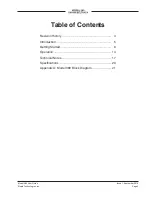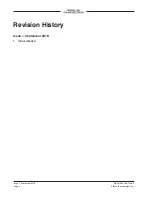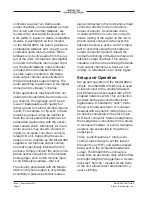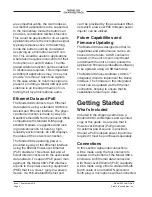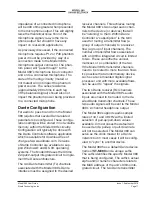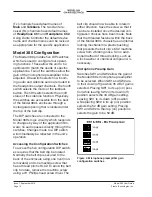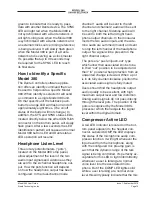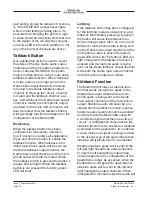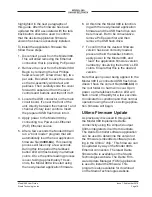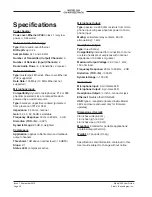
Model 380 User Guide
Issue 1, September 2016
Studio Technologies, Inc.
Page 9
using a cable-mounted 3-pin male XLR
connector. A set of headphones or an
earpiece will be connected by way of
a ¼-inch 2- or 3-conductor plug. And,
depending on the application, the Model
380’s microphone-level output may be
interfaced with other equipment using
a cable terminated with a standard 3-pin
female XLR connector.
Ethernet Connection with PoE
A 100BASE-TX Ethernet connection that
supports Power-over-Ethernet (PoE) is
required for Model 380 operation. This one
connection will provide both the Ethernet
data interface and power for the Model
380’s circuitry. A 10BASE-T connection is
not sufficient and a 1000BASE-T (“GigE”)
connection is not supported unless it can
automatically “fall back” to 100BASE-TX
operation. The Model 380 supports Ether-
net switch power management, enumerat-
ing itself as a PoE class 1 device.
The Ethernet connection is made by way
of a Neutrik etherCON protected RJ45
connector that is located on the bottom
of the Model 380’s enclosure. This allows
connection by way of a cable-mounted
etherCON connector or a standard RJ45
plug. The Model 380’s Ethernet interface
supports auto MDI/MDI-X so that a “cross-
over” or “reversing” cable will never be
required.
Ethernet Connection without PoE
As previously discussed in this guide,
the Model 380 was designed such that
the Ethernet connection will provide both
data and Power-over-Ethernet (PoE)
power. There may be situations where the
associated Ethernet switch does not pro-
vide PoE power. In such cases an external
PoE midspan power injector can be used.
If the selected midspan power injector is
802.3af-compatible it should function cor-
rectly. Midspan units are available from a
variety of sources, including many online
retailers.
Microphone Input
The Model 380 provides a 3-pin female
XLR connector that allows a balanced
dynamic microphone to be connected.
The microphone can be a stand-alone
handheld (“stick”) type or can be part of a
broadcast-style headset. The Model 380’s
microphone input is directly compatible
with balanced dynamic microphones. A
microphone should be connected such
that pin 1 is common, pin 2 is signal high
(+), and pin 3 is sign low (–).
It’s possible to connect a microphone
that requires P12 or P48 phantom power
for operation. In this case power must be
provided externally by way of a compat-
ible signal connection made to the Model
380’s microphone output connector. It’s
expected that the microphone output
connector would interface with the mi-
crophone input on a broadcast camera,
audio console, microphone mixer, or simi-
lar equipment. Inputs on these devices
would typically offer phantom power and
they should be enabled. Phantom power
present on the Model 380’s microphone
output will “pass through” to the Model
380’s microphone input and then on to the
connected microphone. The Model 380’s
microphone input circuitry will not be dam-
aged by the presence of phantom power.
It will still function properly, offering the
same performance as if a dynamic micro-
phone was connected to the Model 380’s
microphone input.
Содержание M380
Страница 2: ...This page intentionally left blank...



